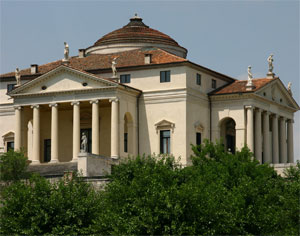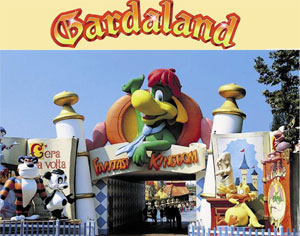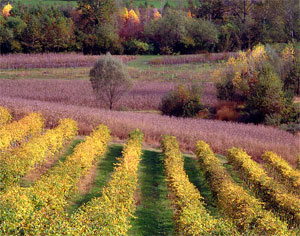Holiday homes and short-term apartments for rent in Vittorio Veneto.
One day excursions to Treviso, Padua, Vicenza, Bassano, Belluno, Verona. Only a few miles away!
Our homes are best place to leave from for day trips to the art cities of the Veneto region. Staying in a very cozy and welcoming town asVittorio Veneto also allows you to pursue outdoor activities such as bicycling, hiking, golfing, horse riding, and always catching sight of beautiful landscapes. Moreover, the accommodations we offer, as a group of private owners wishing to rent their second homes directly to foreign visitors and holidaymakers are affordable, and in some cases very cheap.
PADUA

A bit of history: Padua was one the most flourishing towns since medieval times , but only in the Early Renaissance Padua had a period of extraordinary cultural ardor for science and art, as an absolute protagonist thanks to the presence of European artists and writers under family Carraresi and then under Venetian Republic.
University was founded in 1222, the third oldest in the Western world after Bologna (1088) and Paris (1150). The magnificent Basilica di Sant’Antonio was built immediately after the death of the Saint in 1231. It holds the body of Saint Anthony. Between 1303 and 1305 Giotto painted his masterpiece, the decoration of the Scrovegni Chapel. From 15th century on Padua enjoyed relative peace and quiet thanks to the Governments of the Republic of Venice and Austro Hungarian Empire.
What you must see in Padua: a short visit to Padua must include a tour to the Scrovegni Chapel painted by Giotto, the Basilica of Sant’Antonio in Byzantine style as the Venetian St. Mark, the Medieval square Piazza dei Signori, the University with the famous Anatomy Theater, and the Prato della Valle, one of Europe biggest square.
How to reach Padua from Vittorio Veneto?: By Train: from Mestre (Venice), there are many trains to Padua (a train every fifteen minutes, a 20 mins ride). By car: take the Autostrada from both exit Vittorio Veneto south or nord, direction first Venice and then Milano
VICENZA

A bit of history: Vicenza at the end of the Middle Ages fell under the control of several Signorie (lordships). After a terrible battle against Ezzelino III da Romano, Vicenza capitulated to Padua and subsequently came under the dominion of the family della Scala of Verona and the family Visconti of Milan. In 1407 the city of Vicenza spontaneously decided to be part of the Republic of Venice; from then until 1797, the long government of “la Serenissima” provided four centuries of peace and welfare, arts flourished and economy prospered.
The sixteenth was the century of the great architect of the late Renaissance Andrea Palladio, who bequeathed to the city of Vicenza, and to the world, an irreplaceable heritage of buildings and sumptuous Venetian Villas.
You can admire his major works such as the Palladian Basilica in the central Piazza dei Signori, the Teatro Olimpico, Palazzo Chiericati and Villa Capra (la Rotonda) placed just outside. The Palladian tradition was continued in Vicenza by Vincenzo Scamozzi and other architects until the eighteenth century, while the Palladian style spread across Europe.
What you must see in Vicenza:take a short walk through the streets and alleys of the city to you go to the Teatro Olimpico, one of the purest creations of Renaissance architecture in Italy, and the most beautiful work of Palladio. The Venetian villas of Palladio are all in the country-side, you need to go by car and find a very precise map with the opening hours of each villa; if you do not have a car you might have to find a guided tour. You must visit the Villa Rotonda (interior only open on Wednesdays), Palladio's most celebrated work, and villa Malcontenta, considered as the most beautiful house in the world.
How to reach Vicenza? : if you are by car the highway (autostrada) connects Vittorio Veneto to the exit of Vicenza Ovest. By train is very easy, but you will not be able to visit the Palladian Villas, in the country side.
BELLUNO, NICE AND VERY NEAR !

Belluno,town of 31,000 inhabitants and capital of the province, is the place to leave from to get to all destinations in the Venetian Dolomites. Thanks to its closeness to Vittorio Veneto, Treviso and Venice, it is a perfect tourist destination for short day trips. Belluno is particularly pleasant for its enviable location close to everything in the Venetian Dolomites and for the respect that its inhabitants show for environmental issues.
A bit of history: The city of Bellunum was important since the times of Roman Emperor Augustus. In the Middle Ages was under the dominion of the Lombards and Carolingians. From then on it fell under several families of Treviso, the Ezzelini, the Camino and the Carrara. In 1404Belluno became part of the Republic of Venice (La Serenissima). In 1806 was part of the Austrian Empire, and in 1866 joined the Kingdom of Italy. During the First World War Belluno was committed to defending the Austrian – Italian border. On September 8th, 1943, the Committee of opposition to Nazi Fascists was formed.
A walk inside Belluno town is very agreeable:
Here some of the most important places of Belluno that you must visit: the splendid square, Piazza del Duomo where you can admire the Cathedral, rebuilt in the sixteenth century, with its beautiful baroque bell tower and beautiful paintings inside; the Rectors' Palace that now houses the Prefecture, built in 1491; the clock tower of 1549; Martyrs Square,center of the city and Market Square, featuring beautiful Renaissance buildings and arcades.
Do not forget to visit also: The Museum, which collects prehistoric and Roman findings. Way Mezzaterra, evocative Roman street. Porta Dion, that was the main entrance to the Old Town. The Gothic church of Santo Stefano built in 1468, with its ancient portal.The sixteenth-century church of Madonna delle Grazie. The Palace of Count Bishop and the church of St. Peter.
How to reach Belluno from Vittorio Veneto?: By car it’s very easy. It is only a 25 minute ride on the highway. By train: there is a direct train every two or three hours, or else you have to change in Ponte nelle Alpi.
BASSANO DEL GRAPPA

A bit of history:Bassano in the Middle Ages was under the dominion of the Lombards and Carolingians; from the year 1100 was ruled by the family Ezzelini, later it was under Vicenza and Padua, until the town joined in 1404 the Republic of Venice (La Serenissima). Next came four centuries of peace and prosperity. With the Campoformido treaty between Napoleon and Austria, Bassano became part of Lombardy-Venetia Austrian Empire. in 1866 the town became part of the Kingdom of Italy. During the First World War Bassano was field of hard battles. There are 23,000 soldiers buried in the Ossuary of Monte Grappa. With the outbreak of Second World Warthe city was submitted to the Germans. The city also took part in the Resistance giving many groups of Partisans.
What you must see in Bassano: The bridge on the river Brenta, called Ponte Vecchio (old bridge), also known as the Bridge of the Alpini (a military corp of mountain soldiers), that gave the title to a popular song. First built in 1569, the bridge was designed by Andrea Palladio, but it was destroyed twice: by a flood in 1768, and than by the Nazis during their retreat. It was rebuilt in 1947 following the original design by Palladio. From the bridge you can enjoy great view of the surrounding mountains.
There are numerous buildings from the Renaissance such as the Palladian Villa Angarano , Villa Rezzonico XVII-XVIII sec. with stuccos attributed to Canova, the Cathedral XI sec., rebuilt in 1417, and the church from XII sec. of San Francesco di Bassano.
How to reach Bassano: by car it’s pretty simple (about 1h30 ride). Follow a minor road that goes through small villages. It’s a godd opportunity to visit two or three things worth seeing: Revine, Lago, Follina (you could make a short visit to the Benedictine Abbey from the XII sec.), Solighetto, Vidor (bridge on River Piave), Cornuda, then Asolo, Maser and Crespignaga (you could visit the Villa Barbaro of Palladio), and then you reach Bassano.
VERONA

When someone says the word “Verona”, immediately comes to mind Arena Opera Festival. The lyric season begins on June 18th and finishes on August 29th, 2010. You have to make sure to book your tickets several weeks in advance: there are many sites that book tickets on line. During The Arena Opera Festival it is also almost impossible to find accommodation in Verona to stay overnight. If you decide to rent in Vittorio Veneto you must know that going by car to Verona the night of the show is not so convenient, it is a hour and 45 minute drive by highway (about 170 km), then once there it is difficult to find parking. You have to leave at least two hours and a half before the show starts, excluding any kind of unexpected traffic jam. The best thing to do for you would be to arrive in the morning find a parking space fairly close to Arena than take your time to visit the immense artistic and archaeological treasures of Verona, including of course Juliet's house.
Gardaland: The park entrance is on the SS 249 (Garda East) between Peschiera and Lazise, a few km from Verona. Gardaland is the Disneyland of the Lake Garda.
A bit of history: In the third century BC Verona was a faithful ally of Rome. Under the emperor Vespasian the city reached the peak of wealth and splendor: the last great work built in the first century was the Arena, the third Roman amphitheater in size. For many years afterward barbarian invasions stormed also the town of Verona . Under the domination of German Theodoric (Dietrich von Bern) the town lived a time of great splendor, which continued under the dominion of the Lombards and later with the Carolingian Empire. In 1405 Verona is entrusted to the Venetian Republic, under which the city enjoyed a long period of peace. Like most of Veneto, Verona, also came under Austrian domination of the Lombardo-Veneto, and in 1866 became part of the kingdom of Italy. After the fall of fascism Verona had indeed become the main centre of the Italian Social Republic.
How to reach Verona from Vittorio Veneto: it is a170 km drive on the highway. There are any trains to Verona leaving from Venice/Mestre
CONEGLIANO VENETO

Cima da Conegliano is a great Venetian painter of the sixteenth century. You can admire one of his most important works of art in the cathedral of his hometown. From February 2 until June 2, 2010 there is a temporary exhibition of many of his important paintings. The city boasts many antique buildings and it is surrounded by vineyards of Prosecco wine. It’s very near to Vittorio Veneto.
Postscript: near Conegliano we have availability of villas for large groups only, 6,8,10 people; 3,4 bedrooms.
TREVISO

Treviso is called "the city of water”. During the Medieval and Renaissance age the many waterways were exploited with several waterwheels which mainly powered mills for milling grain produced locally. The waterways were all navigable and "barconi" would arrive from Venice at the Port of Treviso (Porto de Fiera) pay duty and offload their merchandise and passengers along Riviera Santa Margherita. Fishermen were able to bring fresh catch every day to the Treviso fish market, which is held still today on an island connected to the rest of the city by two small bridges at either end.(source: Wikipedia)
The whole city is very beautiful and pleasant, no need to read a guidebook of the monuments and works of art. If you just walk around the town, you will realize that everything is very rich and elegant. Of course, if you are very interested in architecture and painting, then it is better to be equipped.
In short, we recommend that you to spend some time in Treviso. Treviso is very near to Vittorio Veneto both by car and by train.
A bit of history: Like nearly all cities of the Veneto Region, Treviso was subjected in the Middle Ages to Lombard and Carolingian rule, until the joining the Republic of Venice. Under the Venice Republic (la Serenissima) Treviso lived a time of wealth and splendor, which lasted even during the period of Austrian domination, and that of the Kingdom of Italy. During the First World War, Treviso held a strategic position close to the Austrian front. Just north, the Battle of Vittorio Veneto helped turn the tide of the War.
What you must see Treviso: near the railway station, along Corso del Popolo, you find Piazza dei Signori, with its Gothic Palazzo dei Trecento, with the Torre Civica. its most known attraction is the canal of Buranelli that flows along a lane of arcade. Along the river you can see the antique fish market on a small island.
The antique building Cà dei Carraresi usually hosts important art exhibitions.
How to reach Treviso from Vittorio Veneto: by car you take the highway to Venice, get out at Treviso North exit; it is an only 25 minute drive.
By train: there are not many trains leaving directly from Vittorio Veneto, it is better to leave from Conegliano where there is a train to Treviso every 30 minutes.
ASOLO

It is a small town much loved by the British, especially for the attractive five star Hotel Cipriani or the very expensive in beautiful villas, same flavor of the one in Venice and the Venetian Harris bar.
The town was home to the English poet Robert Browning, the actress Eleonora Duse, the British travel writer and explorer Freya Stark.
In Asolo you can take a nice walk wandering around and shopping in the specialty boutiques and local artisan shops along the romantic arcade alleys. If you visit Asolo on the second Sunday of the month, you can search for rare historical objects at the monthly antique market.
CASTELFRANCO VENETO

It is a beautiful walled town with a very large square just outside the walls. It is the birthplace of the great Venetian painter Giorgione. You can see one of the few works attributed to him in the Cathedral of Castelfranco.
Giorgione (Castelfranco 1477/8 – 1510) was an Italian painter of the High Renaissance in Venice. Giorgione is known for the poetic quality of his work, though only about six surviving paintings are acknowledged for certain to be his work. The resulting uncertainty about the identity and meaning of his art has made Giorgione one of the most mysterious figures in European painting.
VITTORIO VENETO, A COZY TOWN the best place to leave from for your excursions and to visit all the art cities of Veneto
The cozy town of Vittorio Veneto is the real chance to rent holiday apartments 1,2,3 with bedrooms or villas (with or without a pool) with 3,4,5 bedrooms. Vittorio Veneto, besides being in itself an art city of Venice, is the best placed to leave from to visit all the other art cities of the Veneto, such as Venice, Padua, Vicenza, Belluno, Treviso, Verona, Castelfranco, Conegliano, Asolo. It is also just an hour drive from Cortina d'Ampezzo and Cadore, in the Dolomites.
And moreover , Vittorio Venento offers you the possibility to have an active vacation practising outdoor sports such as horse-riding, golf, and particularly cycling and hiking up and down on the surrounding hills and in the nearby forest of Cansiglio, everything near your accommodation. Thanks to its closeness of Cortina d'Ampezzo (1 hour drive), you’ll have the chance to take beautiful walks and hikes in the Dolomites that we highly recommend.

